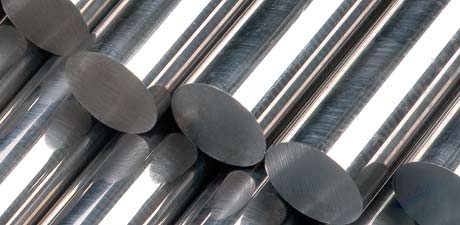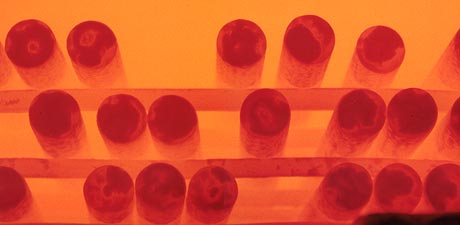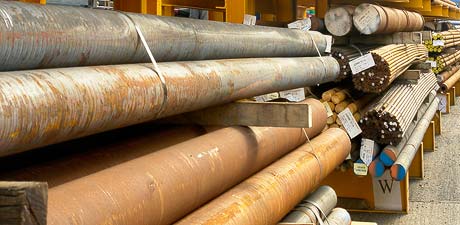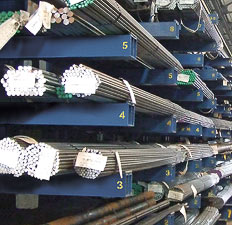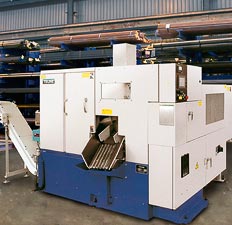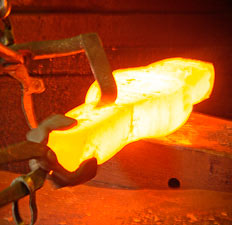Technical Data
Metallurgical Terms
S.
Chemical symbol for sulphur.
S-Curve.
(See Time Temperature Transformation Curve).
Sadden.
An operation in which an ingot is given a succession of light reductions under a hammer or press, or in a rolling mill, with the object of overcoming initial tenderness.
Salt Bath.
A bath of molten salts used for heat transfer when processing steel, for hardening, tempering or quenching. Salt baths give uniform heat transfers and prevent oxidation. Different salts are used for different temperatures; for tempering, e.g., sodium and potassium nitrate, and for hardening, sodium cyanide and sodium, potassium, barium and calcium chlorides.
Sand-Blasting.
A method of cleaning metal surfaces by means of sand directed from a nozzle at high velocity; also used for forming a key on the surface of various materials requiring a finish such as enamel.
Sb.
Chemical symbol for antimony.
Scale.
The oxidized surface of steel produced during hot working or by exposure to air or steam at elevated temperature. It consists of partially adherent layers of corrosion products consisting of iron oxides in the form of FeO, Fe2O3 and Fe3O4. The scale becomes cracked and may break off during working, and according to the operation is known as roll, hammer, or mill scale.
Scaling.
The formation of scale on the surface of steel, but the term is sometimes used to describe the removal of scale, i.e., descaling as in pickling.
Scarf.
(a) To bevel the edges of skelp in the process of making lap-welded pipe.
(b) To bevel the edges of plates prior to welding.
(c) (See Scarfing).
Scarfing (Deseaming).
A process of burning out defective areas on the surface of ingots or semi-finished steel, by the oxy-acetylene method. By this means the surface of the steel is put into such a condition that it can be rolled or forged to a satisfactory product.


